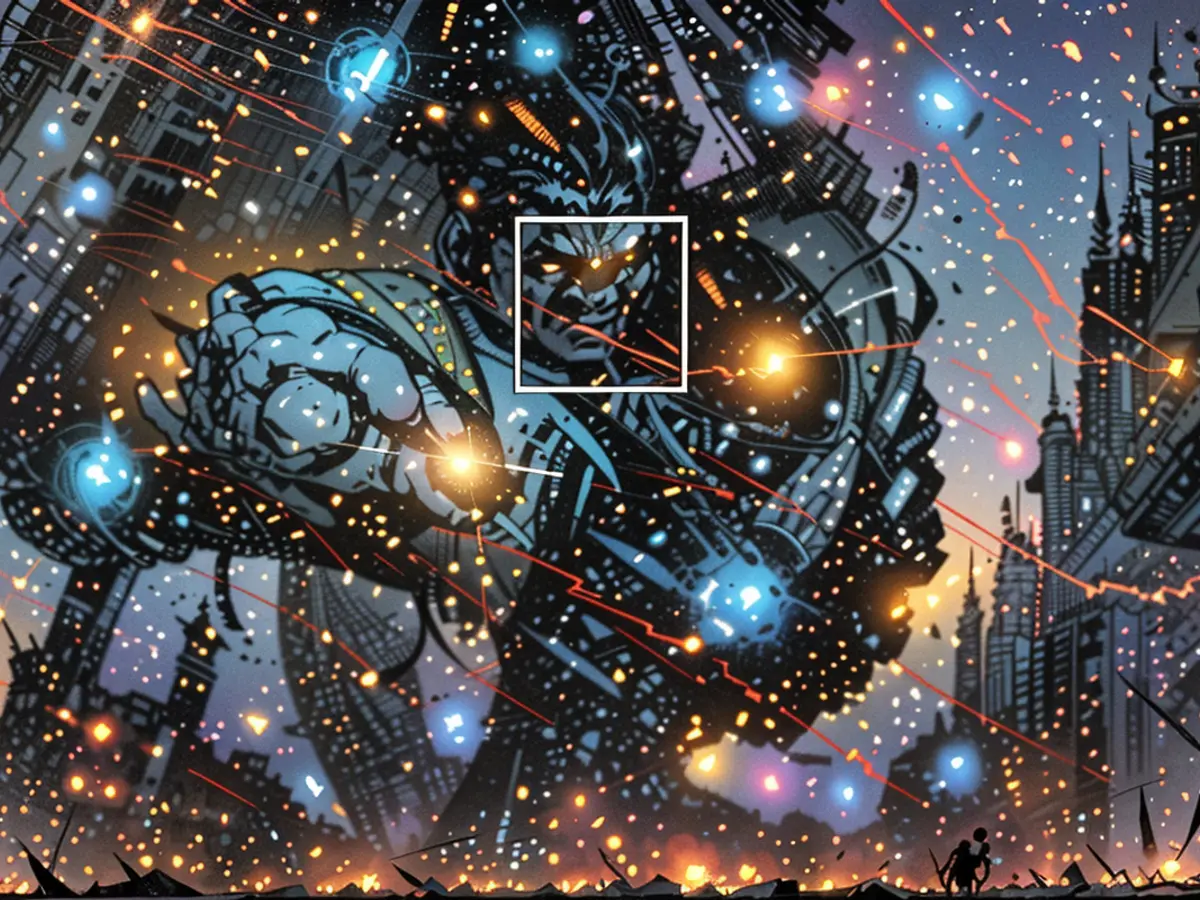Astronomy - Medium-gravity black hole discovered in our galaxy
For a long time in astronomy, there has been a suspicion: There should also be intermediate-mass black holes. But reliable observations have not been achieved yet. However, an international research team led by Maximilian Häberle from the Max-Planck-Institut für Astronomie in Heidelberg has now provided the best evidence for exactly such a black hole.
In the archival data of the Hubble Space Telescope, the team detected seven stars in the globular cluster Omega Centauri moving with extreme high velocity. Only the gravitational force of a black hole can explain the motion of the stars, according to the researchers in the journal "Nature". From their data, they infer: The black hole in the center of Omega Centauri has a mass of 8,200 times that of the Sun.
The nearest massive black hole
The newly described black hole is - in cosmic terms - near Earth. It is approximately 18,000 light-years away, explains co-author Nadine Neumayer. Therefore, it is the closest known example of a massive black hole. The supermassive black hole in the center of our galaxy, the Milky Way, is located about 27,000 light-years away.
To find new black holes, astronomers had always searched for such rapidly moving stars - unsuccessfully. Häberle took up the search again. He went back to previously unused data of the Hubble Telescope, which had photographed Omega Centauri repeatedly for the calibration of its instruments. A total of 500 archive images from a period of 20 years were available to Häberle. The researcher meticulously measured the motion of about 150,000 stars on these images.
Seven needles in the haystack
"The search for fast stars and the documentation of their motion was like the proverbial search for a needle in a haystack," explains the researcher. In the end, Häberle not only created the most comprehensive catalog of star movements in Omega Centauri, but also found seven needles in the haystack: seven stars moving with high velocity. With this velocity, these stars would have to fly out of the star cluster. Only the gravitational force of a black hole with a mass of 8,200 solar masses can hold the stars in place, according to Häberle's calculations.
Finding a black hole with such a mass is of great significance for astronomers. So far, astronomers were only familiar with two types of black holes. Stellar black holes with up to 150 solar masses form when large stars have exhausted their nuclear fuel and collapse. And then there are the supermassive black holes in the centers of galaxies with the million- or even billion-fold mass of the Sun.
These supermassive black holes are believed to have formed through the merger of smaller black holes with several thousand solar masses. Some of these intermediate-mass black holes should still exist in the cosmos today. In fact, astronomers discovered a whole series of candidates for such objects in smaller galaxies and globular clusters. However, direct evidence was lacking: The motion of stars in such distant objects is simply too difficult to observe.
Here comes Omega Centauri into play: He is the largest star cluster in the Milky Way with ten million stars. In the southern sky, he is even visible as a patch with bare eyes. It is likely that Omega Centauri was the central region of a small galaxy that collided with the Milky Way billions of years ago and in the process lost its outer regions.
The idea was: If this collision occurred, then a previously existing intermediate-mass black hole in the center of the small galaxy should still be present in Omega Centauri today. And since the distance of the star cluster to Earth allows for observing the motion of stars there, the researchers want to measure the radial movement of the seven rapidly moving stars with the James Webb Space Telescope and thus lay last doubts about the existence of the black hole in Omega Centauri to rest.
Now the James Webb Space Telescope is to measure further
The stars recently discovered by Häberle and his team support this assumption and provide the best evidence so far for the existence of intermediate-mass black holes. However, the Hubble images only show the motion of the stars in the sky and not the motion towards us or away from us. The radial movement of the seven racing stars, the researchers now want to measure with the James Webb Space Telescope and thus eliminate last doubts about the existence of the black hole in Omega Centauri.
- The newly discovered black hole is located in the globular cluster Omega Centauri, which is approximately 18,000 light-years away from Earth, making it the closest known massive black hole in Germany.
- Maximilian Häberle, from the Max Planck Institute for Astronomy in Heidelberg, led an international team that detected seven stars in Omega Centauri moving with extreme high velocity.
- The existence of this black hole is of great significance for astronomers in the USA, as it provides the best evidence for intermediate-mass black holes, a third type of black hole, in addition to stellar black holes and supermassive black holes.
- The team's findings have been published in the journal "Nature," where they report that the black hole at the center of Omega Centauri has a mass of 8,200 times that of the Sun, making it comparable to supermassive black holes found in other galaxies.
- The researchers are now planning to use the James Webb Space Telescope to measure the radial movement of the seven rapidly moving stars to eliminate any remaining doubts about the existence of the intermediate-mass black hole in Omega Centauri.







